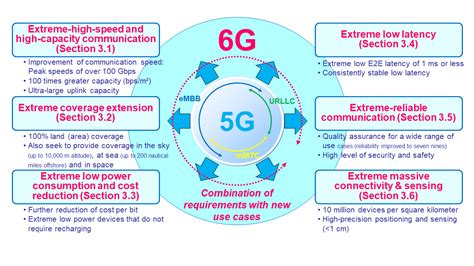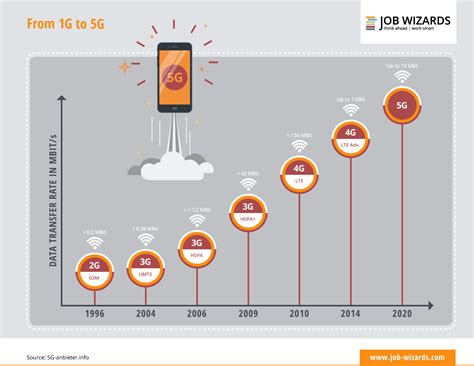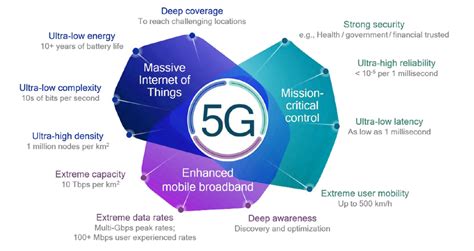Breaking News


Popular News


Discover how our cutting-edge technology improves data transfer speeds, network capacity, latency, reliability, and integrates AI, machine learning, and holographic communication for unprecedented performance.”Advancements in 6G Wireless: What to Expect”
As we continue to rely more and more on wireless technology in our daily lives, the demand for faster, more efficient networks continues to grow. The upcoming transition to 6G wireless technology promises to revolutionize the way we connect and communicate. In this blog post, we will explore the exciting developments that are expected to come with 6G wireless, from increased data transfer speeds to the integration of AI and machine learning. We’ll take a closer look at the potential for enhanced network capacity, improved latency and reliability, and the expanded use of holographic communication. Join us as we delve into the future of wireless technology and what it could mean for the way we live, work, and communicate.
Contents

Increased Data Transfer Speeds
In the rapidly evolving world of wireless technology, the arrival of 6G wireless is set to bring a multitude of benefits to users. One of the most anticipated features of 6G is the significant increase in data transfer speeds. With 6G, users can expect to experience lightning-fast download and upload speeds, enabling seamless streaming of high-definition content, faster file transfers, and improved overall user experience.
Additionally, the enhanced network capacity of 6G will allow for a greater number of devices to connect simultaneously without compromising speed or performance. This means that in an increasingly connected world, 6G will offer the infrastructure needed to support the growing demand for data-intensive applications and services.
The integration of AI and machine learning into 6G technology will further optimize data transfer speeds by enabling intelligent network management, dynamic spectrum allocation, and predictive resource scheduling. This level of optimization will ensure that users can consistently enjoy the benefits of enhanced data transfer speeds, even in high-traffic environments.
| Benefits of Increased Data Transfer Speeds with 6G |
|---|
| Lightning-fast download and upload speeds |
| Seamless streaming of high-definition content |
| Improved overall user experience |
| Greater network capacity for simultaneous device connections |
| Optimization through AI and machine learning integration |

With the advancement of 6G wireless technology, we can expect a significant increase in network capacity. This means that the ability to handle more data will improve, allowing for better overall network performance. As more and more devices become connected to the internet, the need for enhanced network capacity becomes increasingly important. With 6G, we can expect networks to be able to handle a much higher volume of data traffic, resulting in faster and more reliable connections for users.
One of the key factors driving the need for enhanced network capacity is the growth of the Internet of Things (IoT). As more devices, from smart appliances to industrial machinery, become connected to the internet, the demand for network capacity continues to grow. 6G wireless technology will play a crucial role in meeting this demand by providing networks with the ability to support a larger number of connected devices while maintaining high-speed connections.
Furthermore, enhanced network capacity will also pave the way for the development of new technologies and applications that require high bandwidth and low latency. This includes advancements in areas such as virtual reality, augmented reality, and autonomous vehicles, which all rely on a robust and reliable network infrastructure to function effectively.

Improved latency and reliability
Improved latency and reliability
With the upcoming 6G wireless technology, we can expect a significant improvement in latency and reliability of the network. This means that the time it takes for data to travel from one point to another will be greatly reduced, leading to a more seamless and lag-free experience for users. This is especially important for applications that require real-time communication and data transfer, such as online gaming, video conferencing, and autonomous vehicles.
One of the key factors contributing to this improvement is the use of advanced networking protocols and technologies, such as network slicing and edge computing. These techniques allow for better management of network resources and faster processing of data at the edge of the network, resulting in lower latency and higher reliability. Additionally, the use of artificial intelligence and machine learning in network optimization and predictive maintenance can help identify and address potential issues before they affect the user experience.
Furthermore, the deployment of massive MIMO (Multiple Input, Multiple Output) antennas and beamforming technology will enhance the overall coverage and reliability of the network, especially in densely populated areas and indoor environments. This will ensure that users can stay connected and enjoy high-speed connectivity without experiencing disruptions or slow performance.

Integration of AI and machine learning
One of the most anticipated developments in 6G wireless technology is the Integration of AI and machine learning into the network infrastructure. This integration will allow for more intelligent and autonomous decision-making within the wireless network, leading to improved performance and efficiency.
With the use of AI and machine learning, the network will be able to predict and adapt to network traffic patterns in real time, leading to more efficient use of resources and improved overall network performance. This will result in faster data transfer speeds, enhanced network capacity, and improved latency and reliability for users.
Furthermore, the integration of AI and machine learning will also enable the network to detect and respond to potential security threats more effectively, helping to ensure the integrity and security of the 6G wireless infrastructure. In addition, it will pave the way for new and innovative applications and services, such as autonomous vehicles, smart cities, and connected healthcare, that will leverage the power of AI and machine learning in the 6G era.

Expanded use of holographic communication
Expanded use of holographic communication
In the near future, 6G wireless technology is expected to bring revolutionary changes to the way we communicate. One of the most exciting advancements is the expanded use of holographic communication, which will enable users to interact with others in a more immersive and lifelike manner. This technology will allow individuals to project their holographic image in real-time, providing a more natural and engaging form of communication.
Moreover, the use of holographic communication in various industries such as healthcare, education, and entertainment is anticipated to significantly transform the way professionals interact with their clients, students, and audiences. For instance, healthcare providers will be able to conduct remote consultations using holographic images, creating a sense of presence and connection that was previously unattainable through traditional video conferencing.
As 6G wireless technology continues to advance, the expanded use of holographic communication will undoubtedly revolutionize the way we communicate, collaborate, and connect with others, opening up new possibilities for human interaction in the digital age.

What is 6G wireless technology?
6G is the next generation of wireless technology, expected to succeed 5G. It promises even faster data speeds, lower latency, and more advanced communication capabilities.
What are the potential benefits of 6G wireless?
Some potential benefits of 6G wireless technology include faster download and upload speeds, improved connectivity in remote areas, and support for more connected devices.
How does 6G differ from 5G?
6G is expected to build on the foundation laid by 5G, offering even faster data speeds, lower latency, and more advanced features such as holographic communications and intelligent network management.
When can we expect to see 6G technology in use?
While it’s difficult to predict an exact timeline, some experts believe that 6G technology could start to become available around 2030.
What challenges are associated with developing 6G technology?
Challenges in developing 6G technology include the need for new frequency bands, advanced antenna technologies, and addressing potential health concerns related to increased exposure to electromagnetic radiation.
What industries could benefit the most from 6G wireless?
Industries such as healthcare, autonomous vehicles, augmented reality, and smart cities could benefit greatly from the advancements offered by 6G wireless technology.
How will 6G impact the internet of things (IoT)?
6G is expected to provide the connectivity and bandwidth necessary to support a massive increase in IoT devices, enabling more seamless communication and data sharing between connected devices.